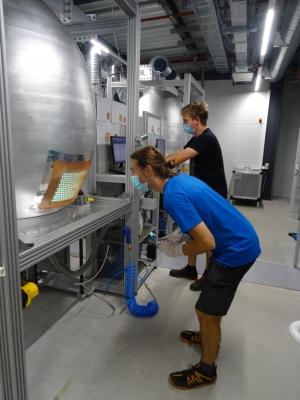Diamond windows in production in Europe
The European Domestic Agency Fusion for Energy is working with a German contrator, Diamond Materials, for the production of sixty 1.1 mm thick discs with a diameter of 7 cm. Each one requires approximately six months to complete, including tests. The company is currently working at a rate of 7 to 10 discs every four months.
First the sythetic diamonds are "baked" in one of the company's 40 furnaces, a process that requires two months. Then the diamond is separated from its substrate, shaped to ITER specifications, and polished before its quality gets confirmed through optical testing.
See the full article on the Fusion for Energy website.


